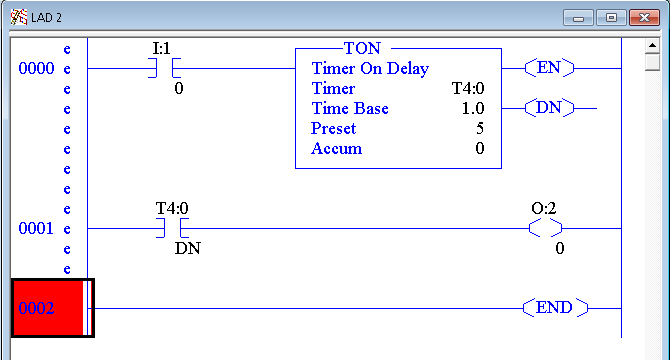


I:4/ 0 means that it is the first input on the card.ĭon’t get the capital “I’s” confused with ones. I: 4/0 means that it uses Slot 4 (the 5th slot in the rack). An address that describes an input on an SLC 500 is I:4/0. HARDWIRED INPUT – a physical connection to the PLC from an input device (switch or sensor, etc.).Īllen-Bradley uses the capital letter “I” to designate a hardwired input. The first rung in a ladder program is always 0000. Just like in an electrical ladder diagram, a rung has some type of output that is turned on or turned off by the preceding entities in the rung. RUNG – A section of the PLC ladder program that terminates in an output function of some type. O:0/ 5 means that it is the fifth output on the PLC.īy the way, don’t get the capital “O” confused with a zero. O: 0/5 means that it uses Slot 0 (in the case of the 1100, this output is onboard) O:0/5 means that it is a physical output. The default is:įor example, an address that references an output of a MicroLogix 1100 is O:0/0. In RSLogix, there are a couple of ways to show the address of a bit. It can be an input, output or internal coil, among others. A few of the most common instructions are described below.īIT – an address within the PLC. An XIC (it looks like a normally open contact –] [– ) is an instruction.

INSTRUCTION – RSLogix’s command language is comprised of “instructions”. Let’s take a quick look at how memory locations (including hardware I/O) are accessed with RSLogix 500. There are a number of addressing schemes used by PLC manufacturers.


 0 kommentar(er)
0 kommentar(er)
